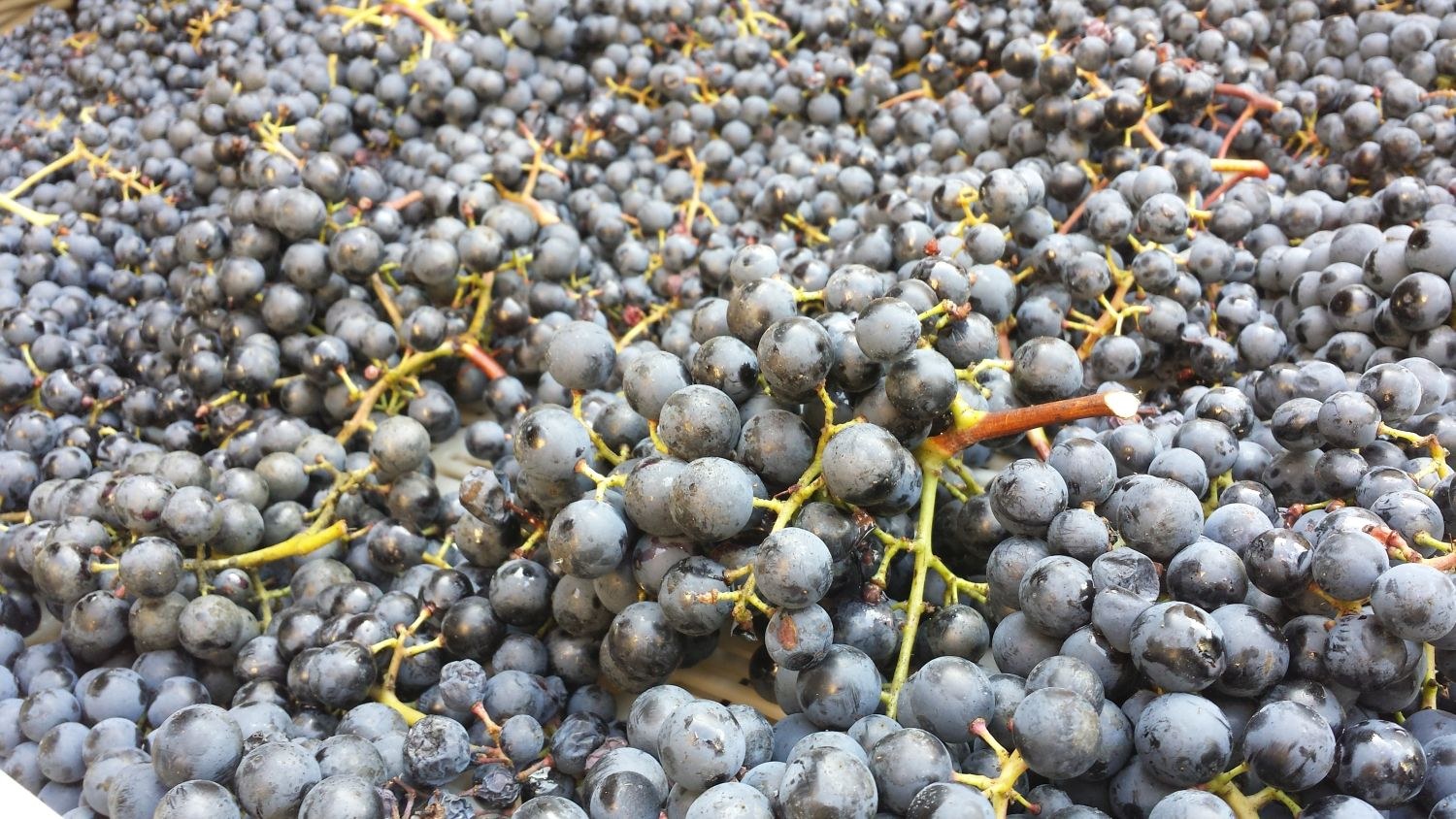
Marzemino: a unique wine

Characteristics, history, and pairings of a wine with a long tradition.
DISTINCTIVE CHARACTERISTICS
What does Marzemino look like?
Quoting the Guide to Italian Grape Varieties by Slow Food Publisher, "A rather high number of biotypes of Marzemino have been cataloged [...]. They generally have a long, moderately compact cluster, cylindrical-pyramidal in shape, with one or two wings. The berry is of medium size, spheroidal, with a blue-black skin that is very pruinose, more or less thin but nevertheless consistent."
The most widespread variety is Marzemino Gentile or Comune. The colour of the leaves in summer ranges from green to reddish-purple and the grape ripening is quite late. The plant prefers sunny and less windy areas; it is resistant to downy mildew, but susceptible to powdery mildew, rots and botrytis. With good productivity, if its yields are kept in check, it can yield interesting red wines. This is why it thrives in poor, calcareous, clayey or basaltic soils.
The wine has an intense ruby-red color. On the nose, it releases floral notes of violet and geranium, accompanied by delicate shades of red fruits and spices. The palate is measured, with good freshness, good persistence and tannins that are never overpowering.
Over time, there have been many interpretations of this grape variety: sparkling, still, dry, sometimes even sweet. Nowadays, it is more commonly found as a dry red. It is usually light and not suitable for long aging.
HISTORY AND PRODUCTION
Marzemino has a very long history in the world of wine, considering it is mentioned in one of Mozart's major works, "Don Giovanni" from 1787.
The origins are not certain, but over the years, three main theories about its origin have emerged:
- Local Origin: various scholars argue that Trentino-Alto Adige is the likely place of origin for Marzemino, selected over the centuries by ancient local populations or discovered by chance and then valued.
- External Origin: some argue for the foreign origin of Marzemino due to its similarity to Marzmin, a village that once existed in the area between Carinthia and Slovenia. It is believed to have been brought to our regions by soldiers of the Venetian Republic. Recent archaeological research, however, places its origin in Asia Minor, in the city of Merzifon. Another theory is based on the discovery of some documents in chronological order: Marzavi grapes are mentioned in commercial records in Cyprus, then in the Dalmatian islands and finally in agricultural exchange centers at the mouths of the Po and Adige rivers.
- Ancient Origin: some sources, lacking historical evidence, claim that Marzemino was brought by the ancient Romans, who were among the first to cultivate vines.
REGIONS WHERE IT IS CULTIVATED
Mainly found in Northern Italy, Marzemino is cultivated in the following regions: Trentino-Alto Adige, Veneto, Friuli-Venezia Giulia, Emilia-Romagna, Lombardy. Let's see the most relevant viticultural areas:
Trentino is considered the ideal area for Marzemino. In Vallagarina it takes on depth and fullness, with subtle balsamic nuances. This expression is entirely unusual for other territories.
Emilia-Romagna and Veneto have been cultivating Marzemino for centuries, producing light sparkling wines. However, in recent years, this grape variety has been valued in its still version for meals, arousing the interest of wine enthusiasts for its elegant floral bouquet, smooth tannins and easy drinkability. In the Conegliano area, its grapes are dried to create the Refrontolo Passito.
In the Euganean Hills, Marzemino is now a niche grape variety, with few cultivated plots. We preserve it because we believe its aromatic expressions are closest to our roots. We chose to favour the cultivation of Marzemino Gentile over Marzemina Bastarda for its elegance and greater longevity.
If you have not tried our Marzemino Belvedere yet, we invite you to our cellar for a tasting. Among the Author's Proofs, we currently also have a still white wine produced with Marzemina Bianca and Moscato. A simple, everyday wine that tells of old traditions.
PAIRINGS
Marzemino in the dry version is a wine with good freshness, delicate tannins and a moderately persistent finish. Because of these characteristics, it is suitable for accompanying food with pronounced richness and moderate succulence. It is also pleasant as an aperitif or as an alternative to a very structured red wine during the summer.
When pairing, it is important to consider personal taste, so it is good to experiment and play with taste and olfactory sensations. The gastronomic pairings to enhance Marzemino can be diverse:
- an appetizer based on grilled polenta and salami;
- a creamy risotto with Gorgonzola DOP, spadone radicchio, and walnuts;
- a succulent beef stew with potatoes;
- cured meats like Culatello di Zibello DOP, coppa piacentina, cotechino, Sopressa Vicentina DOP, or Trentino Mortandela;
- a good fossa cheese, a Monte Veronese or a mixed goat and sheep's milk caciotta;
- it even satisfies those pairings considered challenging for red wines, such as with mushrooms: their slightly bitter undertone prevents them from being paired with wines that are too tannic.
The uniqueness of this wine lies in its frankness and expressiveness: a variety to be preserved and whose enological memory should be kept alive.
